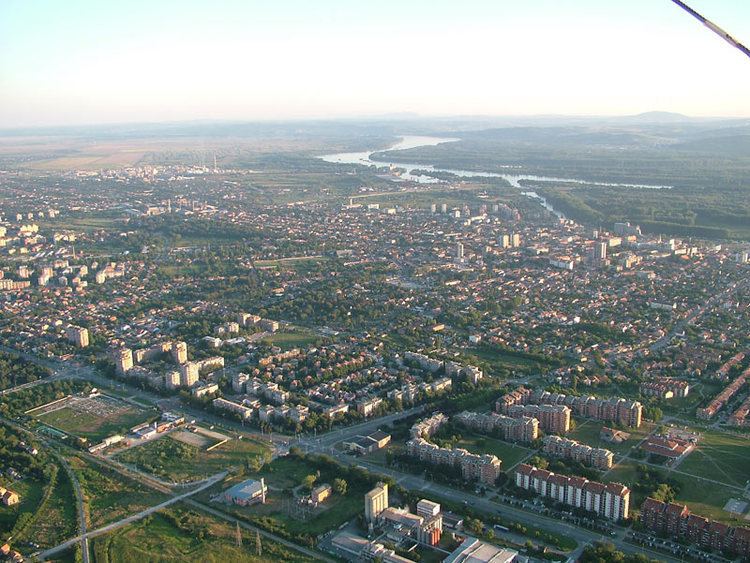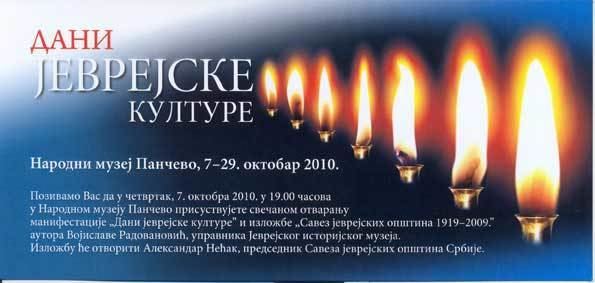Country Population 90,481 (2010) Mayor Pavle Radanov (SNS) | Area 759 km² District South Banat | |
 | ||
Pancevo serbia polluted city or beautiful city
Pančevo (Serbian Cyrillic: Панчево, [pâːnt͡ʃe̞v̞ɔ̝], Hungarian: Pancsova, Romanian: Panciova, Slovak: Pánčevo) is a city and the administrative center of the South Banat District in autonomous province of Vojvodina, Serbia.
Contents
- Pancevo serbia polluted city or beautiful city
- Map of Panevo
- Sasa radulovicdosta je bilone damo penzije parazitimabiblioteka pancevo 27 03 2015
- Name
- Geography
- History
- Administration
- Administrative area structure
- Institutions and festivals of arts
- Cultural monuments
- Local mass media
- Economy and Environment
- Sports
- Famous citizens
- References
Map of Pančevo
Pančevo is the fourth largest city in Vojvodina by population. According to results of the 2011 census, a total of 76,203 inhabitants live in the urban area, while the city administrative area of Pančevo has 123,414 inhabitants.
Sasa radulovicdosta je bilone damo penzije parazitimabiblioteka pancevo 27 03 2015
Name

In Serbian and Macedonian, the town is known as Pančevo (Панчево), in Hungarian as Pancsova, in Slovak as Pánčevo, in Romanian as Panciova and in German as Pantschowa. The place name is probably derived from an old Slavonic term and meant location of marsh.
Geography

Pančevo is located on flat plains at 44°52′14″N 20°38′25″E, approximately 17 km NE of Pančevo bridge to Belgrade and 43 km NW of Smederevo. The altitude above sea level is 77 meters. The southern city quarters are located on the bank of the Danube, the western quarters on the bank of Tamiš. The town is located nearby the wetland Pančevački Rit in the southern part of the geographical region of Banat.
History
In the late 19th and early 20th century were found many archaeological artifacts of the Stone Age period, remains of settlements and places of burial from the times of Bronze Age (Urnfield culture) and Ancient Rome on the urban area. Most of the objects are exhibited at the National Museum of the town.
In 1153, the Muslim geograper Muhammad al-Idrisi described the settlement as an important mercantile place and that is the first historical mentioning of the town. There is no deed or other evidence of founding the city. Today's urban area was administered by the Bulgarian Empire until the begin of the 11th century, then by the Kingdom of Hungary until the 16th century, when it became part of the Ottoman Empire in 1521. During the Ottoman rule, the city was part of the Temeşvar Eyalet and mostly populated by ethnic Serbs. In 1660, Evliya Çelebi described the town as a quadrangular fortification being diameter of one hundred Turkish feet. During the Austro-Turkish War, the fortification was conquered by Claude Florimond de Mercy and his troops in 1716. There is an impression of the old city and its fortification recorded on maps from 1717 and 1720 which are located at National Széchényi Library and Institute of Military History in Budapest.
After the Treaty of Požarevac, the city belonged to Habsburg's Banat. The town was a garrison place of temporarily stationed Regiments of Imperial Army. In December 1764, a military commission of Viennese Hofkriegsrat registered 564 Rascian people who lived in 203 more or less habitable houses. Since this time Habsburg's administration encouraged massive immigration of German settlers to develop the new district of Military Frontier, established in 1765. In January 1794, Francis II signed the charter of borough rights of Pančevo. In the first half of the 19th century, the fortification has been slighted for urban expanding. In 1873, the military frontier was abolished and Pančevo included into Torontál county of Austria-Hungary. In 1902, cadastral maps of the town were recorded which are located at the National Archives of Hungary.
After World War I, the city was part of provisional Torontalsko-tamiške županja (Treaty of Trianon), in 1922 of Belgrade oblast and since 1929 of the Danube Banovina in the Kingdom of Yugoslavia. In April 1941, Pančevo was occupied during the invasion of Yugoslavia by Germany. Soldiers of the Infantry Regiment Grossdeutschland committed a war crime in the Roman Catholic cemetery and outside in front of its wall when 36 Serbian civilians were executed by hanging and shooting as a reprisal for the deaths of 9 Danube Swabian members of the paramilitary formation Deutsche Mannschaft and one member of 2nd SS Panzer Division Das Reich killed by soldiers of the Royal Yugoslav Infantry Regiment 98 after Yugoslav surrender. Propaganda photos and film of the executions were used decades after the event to help chronicle the Wehrmacht's complicity in German atrocities during the war.
During World War II in Yugoslavia, Pančevo was a part of the autonomous Banat within German-occupied Serbia. Political prisoners of National Socialism and Communism has been killed on a location named Stratište near to Jabuka. Most of local Danube Swabian men were recruited or conscripted in the Waffen-SS, the majority of them in the 2nd SS Panzer Division Das Reich, in German Police and in the 7th SS Volunteer Mountain Division Prinz Eugen. Almost all of the local German women and youth were organized in formations Deutsche Frauenschaft and Deutsche Jugend and dedicated to national socialism of Danube Swabians. The town was a regional center of this extremist movement. In 1944, after the defeat of German Wehrmacht and Waffen-SS during the Belgrade Offensive by Allied Armies, one part of the German people left the city, together with defeated German army. Most of remaining Germans were sent after local imprisonment (Fish market camp) to internment camp in Knićanin. The Danube Swabian used term Riblja pijaca (Serbian Fish market) is a strange expression for the urban silk factory (Svilara) near to Tamiš river because this former German concentration camp (established in 1941) was used by Yugoslav Partisans from November 1944 to February 1948. It is a matter of fact, the political term obviously conveys a different place of one's own collective suffering without any indication to own past because there were several Fish markets in town. After the camps were dissolved, most of German population left Yugoslavia because of economic reasons. In the time period after war the town was settled with people originated from all parts of the country. Since 1946, the city belonged to the Srez Pančevo of the Socialist Federal Republic of Yugoslavia and the Federal Republic of Yugoslavia. The city was the administrative center of the region from all these centuries to the present.
Administration
The administration of the municipality of Pančevo is structured in 9 local communities (Mesna zajednica, singular; abbreviation MZ) of seven villages, two towns and the city of Pančevo, structured in eight local communities of eight city districts with several quarters.
Administrative area structure
The administrative area differs to the historical administrative area. From 1946 to 1959, the historical municipality (Srez) was structured in 23 communities, including today's communities and the villages and cities of Baranda, Borča, Crepaja, Debeljača, Idvor, Kovačica, Opovo, Ovča, Padina, Sakule, Sefkerin, Uzdin and Vojlovica. The city district Vojlovica was added to the town in 1978.
Institutions and festivals of arts
The most important Cultural Center of the city (Kulturni Centar Pančeva) is located in the former theater building of the city, founded in 1947 and named National Theater which realized play productions in cooperation with National Theater Novi Sad. In 1956, the political authorities of the town decided the creation of a cultural center which is representing variety of all Arts. The center has a gallery of Modern art, and it promotes continuous festivals like Biennial of Art (Bijenale umetnosti), the music festival Ethno.com and the Pančevački Jazz Festival with artists from all over the world. In addition, some theater productions are shown annually in cooperation with National Theater Belgrade and other famous institutions. In 2012, the center published all popular stories of Zigomar Comics in a collected edition. Since 1977, the House of Youth (Dom omladine) is venue of the event Rukopisi (Manuscripts) where young writers are presented each year. The facility also promotes many other events. There is also the continuous Film festival PAFF worth mentioning which has a good reputation beyond the region. In the past, the city has been filming location for many national and international movie productions, including well known movies such as La Tour, prends garde!, The Mongols, I Even Met Happy Gypsies, Balkan Express, Black Cat, White Cat and Coriolanus.
The National Museum was founded in 1923 and it is located in former neoclassical city hall since several decades. The institution has a valuable permanent exhibition and it is one of the most important museums of Vojvodina. The Vajfert Brewery is located in the town's center and it is the oldest one of today's Serbia, founded in 1722 by Abraham Kepiš from Bratislava. The brewery was run by the Vajfert family for several generations and its most famous represent was Đorđe Vajfert. After closing in 2008 and a conflagration in 2010, the building complex was a ruin in recent years. In 2015, the city began to realize a concept for revitalizing the industrial heritage and in the following year, the Đorđe Vajfert Brewery Museum was opened in the presence of the Austrian and German ambassadors. And last but not least, there is an Archive of the City, founded in 1947 and it is located in former barracks of Austrian-Hungarian Army. The archive collects and preserves materials of town's history from all centuries.
Cultural monuments
Pančevo's Vojlovica monastery, first mentioned in 1536, is one of the oldest monasteries in this region and declared Cultural Monument of Exceptional Importance. The oldest churches in town are the Roman Catholic Church Saint Charles Borromeo, built from 1756 to 1757, and the Serbian Orthodox Church Assumption of Holy Virgin, built from 1807 to 1811. The urban Institute for Protection of Cultural Monuments supports the maintenance and restoration of Pančevo's Cultural Heritage.
In 2014, the silk factory (Svilara) was appointed a cultural monument. One part of the industrial site is a memorial of former German concentration camp. Another part has already been location for exhibitions devoted to historical themes and various events in recent years. The buildings are increasingly decayed in the last years before that decision. From 1948 to 2008, the complex was location of different companies of textile and plastics industry.
Local mass media
The weekly newspaper Pančevac is the oldest one of print media in Serbia, founded in 1869. The weekly newspaper Libertatea is one of the most important print media of Romanians in Serbia. The first edition has been published in May 1945. The most used local mass media is RTV Pančevo. The TV station started broadcasting its programs in 1992.
Economy and Environment
Pančevo is the economic center of South Banat District. There are many industrial companies in processing of oil, steel, aluminum, glass, corn, grain, in metalworking, in producing petrochemicals, fertilizer, commercial packaging, PET molding machines, clothes, grain mill products, bacon and other food, in construction of aircraft, thermal power stations and buildings of steel beams. The industrial site of NIS refinery is the largest one of all refineries in Serbia. In 1999, the industrial site was strategically bombed by NATO during Operation Allied Force. Precise targets included the refinery, the town's airport, the Utva aircraft industry and HIP factory. The UNEP reported in studies about soil and groundwater contaminations caused by NATO bombardment. The contamination is a long-term threat to natural environment and human health. There are two protected natural resources located in surroundings of the city, the natural monument Ivanov's island (Serbian Ivanovačka ada) and the Nature Park Ponjavica.
Sports
There are some popular sporting clubs in town, the football team FK Dinamo Pančevo, the women's football club ŽFK and the basketball club KK Tamiš.
